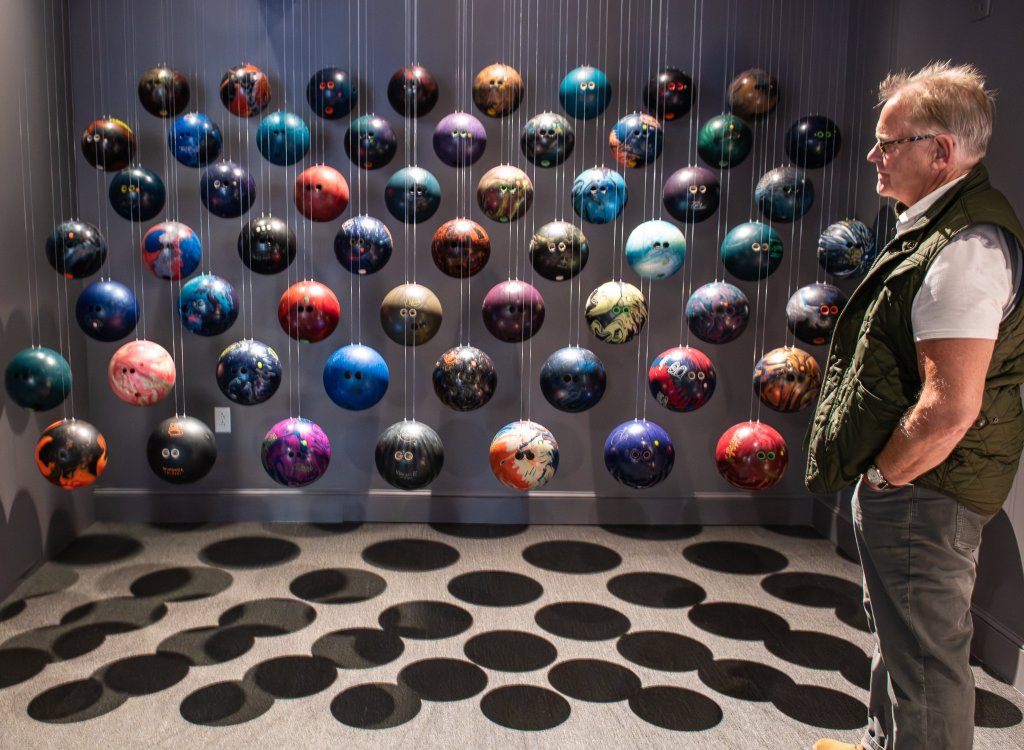
Tasked with developing a commemorative art piece centered around trauma, visual artist Ian Trask has spent the past several months developing an installation at Maine MILL called “Familiar Faces,” commemorating the mass shooting in Lewiston on Oct. 25 two years ago.
It is the first time he has developed an art piece for such a heavy topic, he said. The installation features 59 bowling balls from Just-In-Time Recreation and 58 billiard balls from Schemengees Bar and Grille.
Lewiston’s Maine MILL — Museum of Innovation, Learning and Labor — has collected roughly 2,000 items from both sites where 18 people lost their lives, according to Maine MILL Executive Director Rachel Ferrante. Pieces in the collection were either left outside the buildings or were items discarded by the businesses. The bowling and billiard balls were among those items collected.
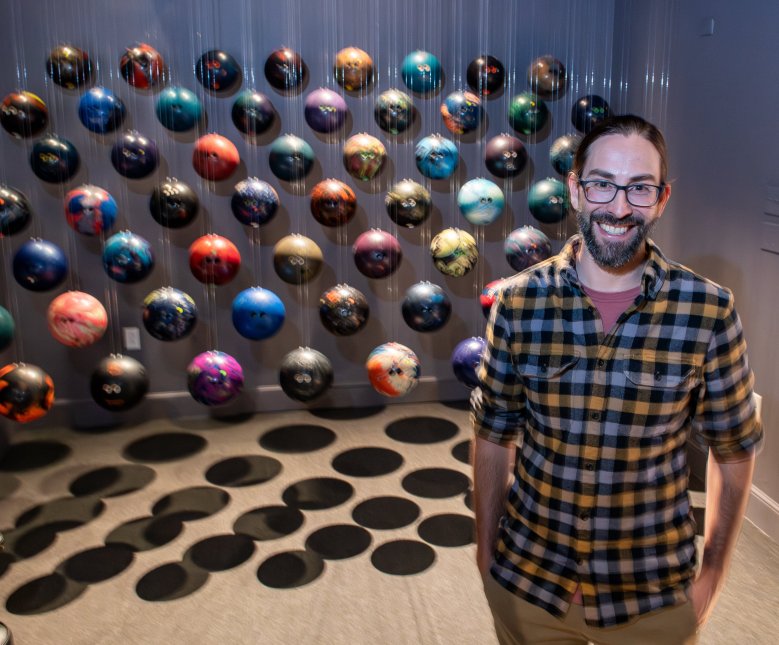
Each year the museum displays a new exhibit in its Memorial Room dedicated to the mass shooting, where items are often displayed through an art installation, she said.
“There are some objects that I think have incredible power and emotion associated with them and those pieces in particular evoke exactly where this horrible tragedy happened and I think transports you right back to the moment that night in a way that not every object does, and it’s very familiar for anybody regardless of how related to this incident they were,” she said.
The Memorial Room is a space for reflection that speaks to resilience and community, but what people take away from exhibits there are often based on their own personal experience with the event, she said.
“This was a significant thing that happened in Lewiston’s history,” she said. “And so, our responsibility is to find a way to reflect that back to the community in a way that also offers space for remembrance, resilience and maybe healing.”
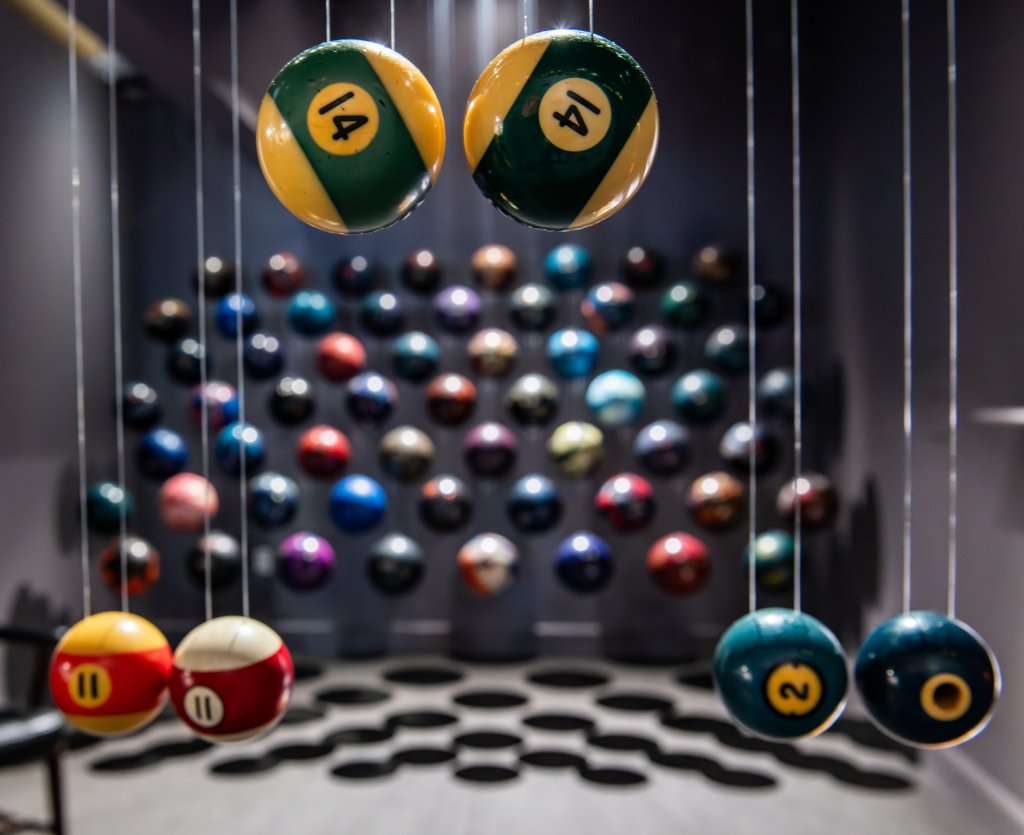
She said she reached out to Trask in March to commission a piece around the bowling and billiard balls.
Trask, from Topsham, works with reclaimed materials usually diverted from waste and repurposing them as art, he said. He has done some pet memorial pieces for people in the past, but this is the first commissioned piece he has done with such an emotionally heavy theme.
At first, he did not think he was capable of creating such a piece, he said.
“There was definitely a process of convincing myself that I was capable of doing this, not just technically, because working with those materials from the outset felt like it could be its own unique challenge, but making those materials say something interesting and sensitive and powerful about such a complicated subject,” he said.
But he pushed past those doubts and started looking into memorials for other tragedies in other places, becoming inspired by a memorial about the lynching of Black people in Alabama and white “ghost bikes” left at sites where cyclists were hit and killed in New York City, he said.
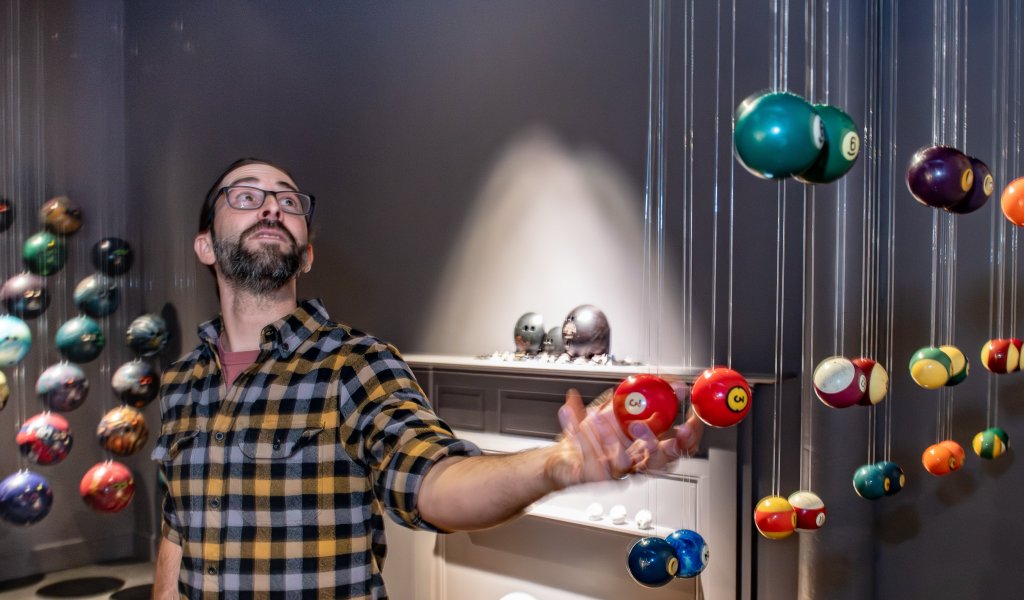
He said he discovered early on that he wanted to suspend the items, which is a technique incorporated in a lot of his work. Bowling and billiard balls are associated with movement and loud sounds so he wanted to suspend them to take them out of their familiar context.
“We’re used to seeing bowling balls and billiard balls in these places of recreation,” he said. “They’re always moving, colliding, making this sort of very familiar sound. You can always picture what a bowling alley sounds like or what a pool hall sounds like based on the collision of these objects. So by contrast, I was going to effectively freeze them in space, freeze them in the air, make them silent, make them still.”
He spent a lot of time figuring out how to orient the objects in the air, he said. Getting building management approvals and paying attention to the objects themselves, specifically the bowling balls, he found an orientation that struck him.
The bowling ball finger holes are faced forward, like eyes peering back at those viewing the installation — somewhat like spectators themselves staring back at people, he said.
This aspect pulls the viewer into the piece, helping to convey the enormity of what happened at two locations, which were meant to be gathering spaces where social bonds are formed and games are played, but which turned into places of terror for those there that night, he said.
A third aspect of the piece hits upon the thread of grief and loss, memorializing and honoring the 18 people who died that night and speaking to survivors’ experiences and those who lost someone close to them, he said.
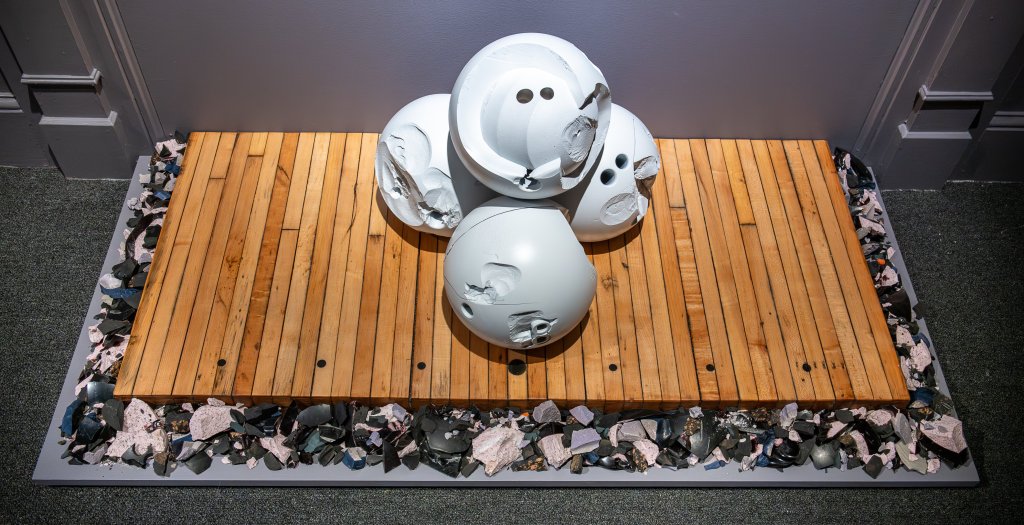
At the center of the installation are four bowling balls and six billiard balls painted white. They are broken and partially shattered with pieces missing. Smaller shards frame the balls. This references not feeling whole after losing someone close, he said.
“In many ways, grief is this state of being left incomplete, this state of holding onto maybe a bunch of pieces that no longer fit back into place. And it’s … potentially a forever process for people of just figuring out how to feel themselves again, knowing that there’s an important part of them that is missing,” he said. “So I wanted to create this component to the installation that included these broken objects.”
The frequency at which the United States is experiencing mass shootings, and subsequent frequent news reporting on the incidents, has disconnected people from the events, he said. He wants his installation to penetrate past that disconnection.
There is a political polarization in the United States that has made it hard to confront gun violence, he said. While his installation is not inherently political, he hopes it forces people to look at this issue and find solutions.
Ultimately he wants the installation to garner a strong emotional response from people and for them to have a memorable moment that impacts what they believe or how they behave going forward through objects that were present during a tragic event in the community, he said.
“As you enter this gallery, you’re kind of positioned between these two installations that look like crowds of people staring at you. And in many ways these are objects that witnessed the event, they were there, they experienced it, they’re telling their story in some ways through their presence. And in a way, them looking at you really makes you a part of the piece,” he said.
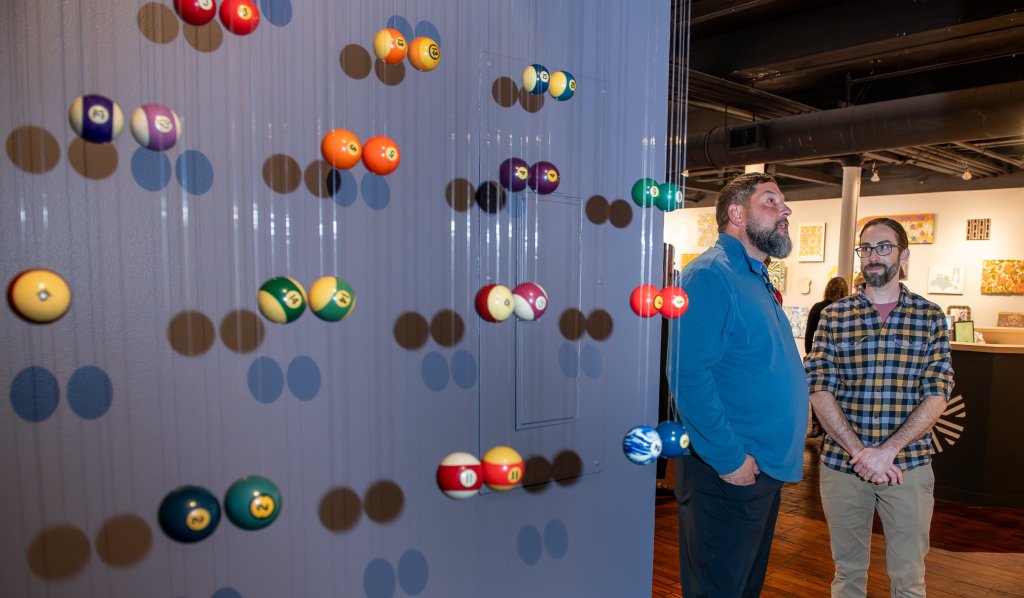
“So it kind of forces you to think about where you stand on the subject matter, how you feel about this tragedy and maybe makes you consider how you can, how you might navigate the future to help prevent something like this,” Trask said.
The installation will be displayed at Maine MILL until the museum moves to its new location sometime next year, Ferrante said. The museum is at 35 Canal St. in Lewiston in the Bates Mill Complex off Chestnut Street. The entrance faces Canal Street. It is open Wednesday-Saturday 10 a.m. to 4 p.m. or by appointment outside of those hours. There is no admission fee to view the installation.

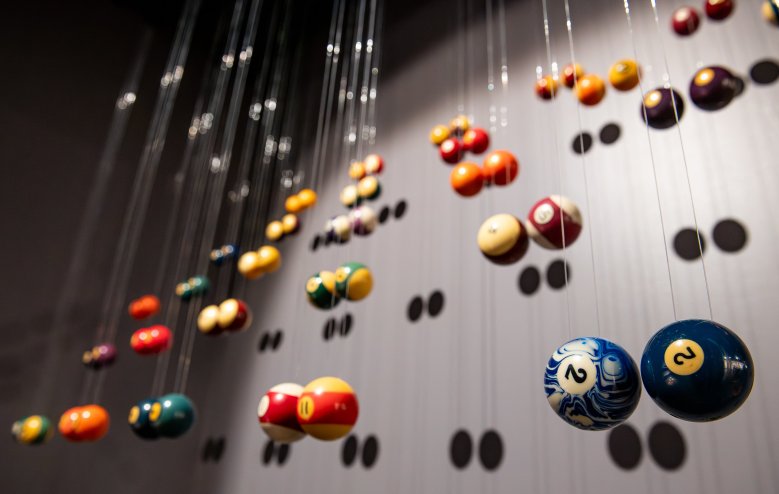
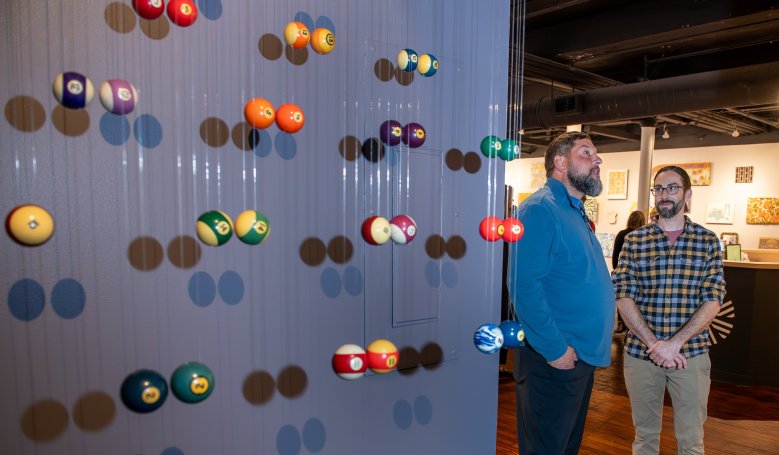
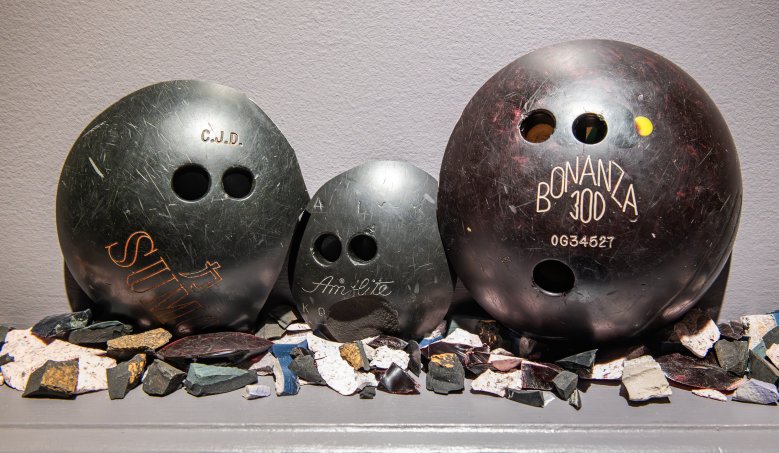
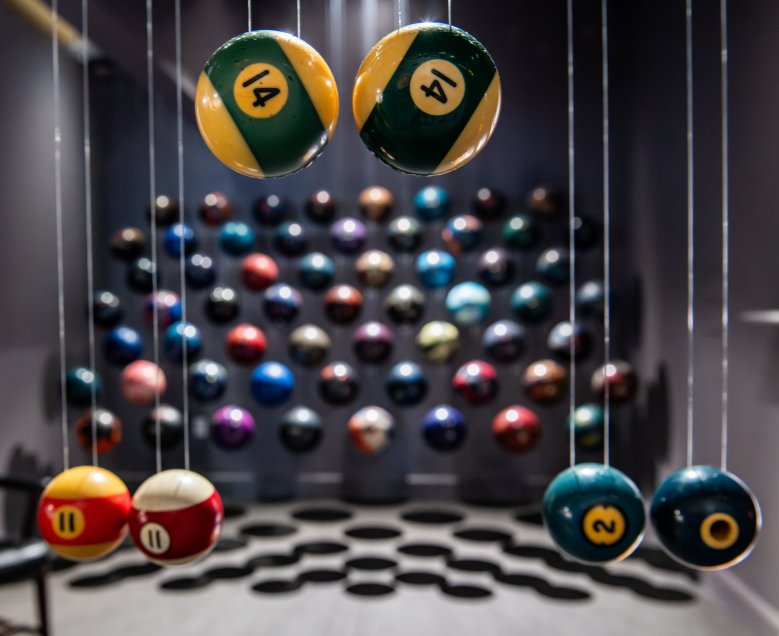
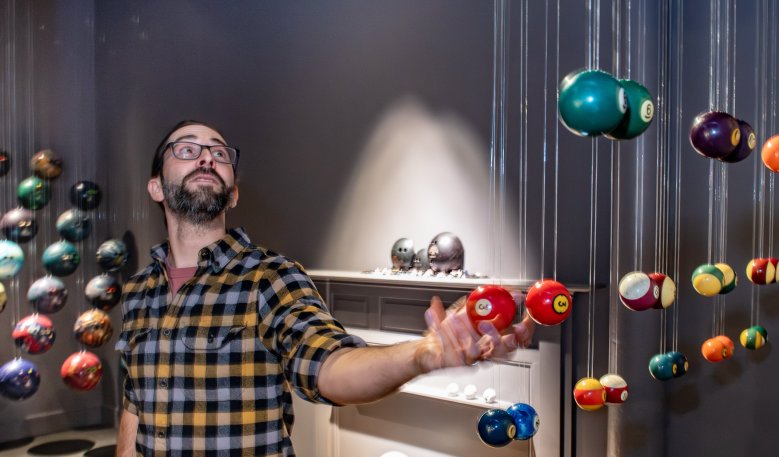
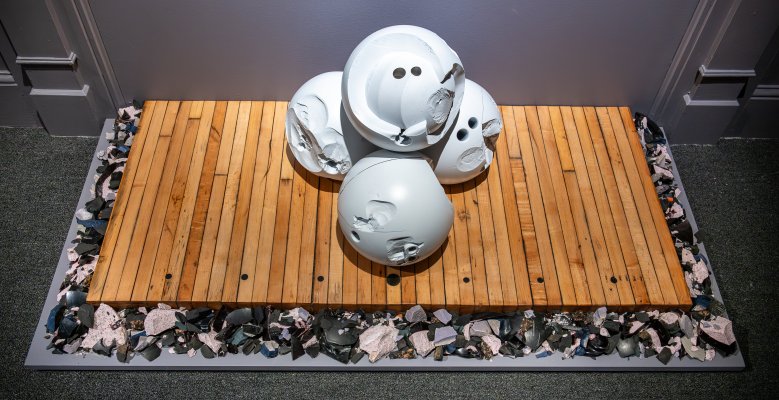
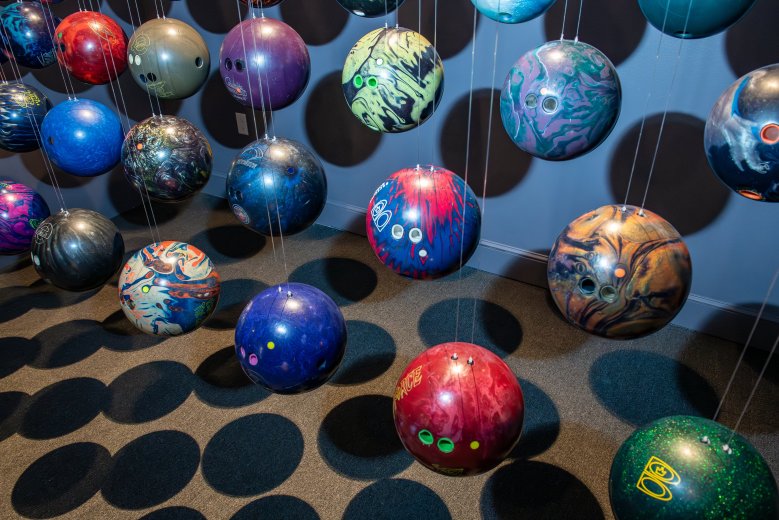
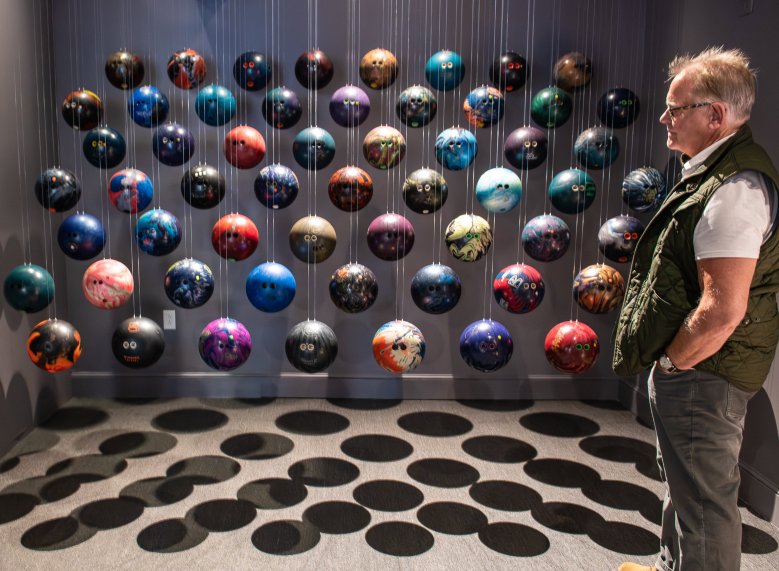
We invite you to add your comments. We encourage a thoughtful exchange of ideas and information on this website. By joining the conversation, you are agreeing to our commenting policy and terms of use. More information is found on our FAQs. You can modify your screen name here.
Comments are managed by our staff during regular business hours Monday through Friday as well as limited hours on Saturday and Sunday. Comments held for moderation outside of those hours may take longer to approve.
Join the Conversation
Please sign into your CentralMaine.com account to participate in conversations below. If you do not have an account, you can register or subscribe. Questions? Please see our FAQs.